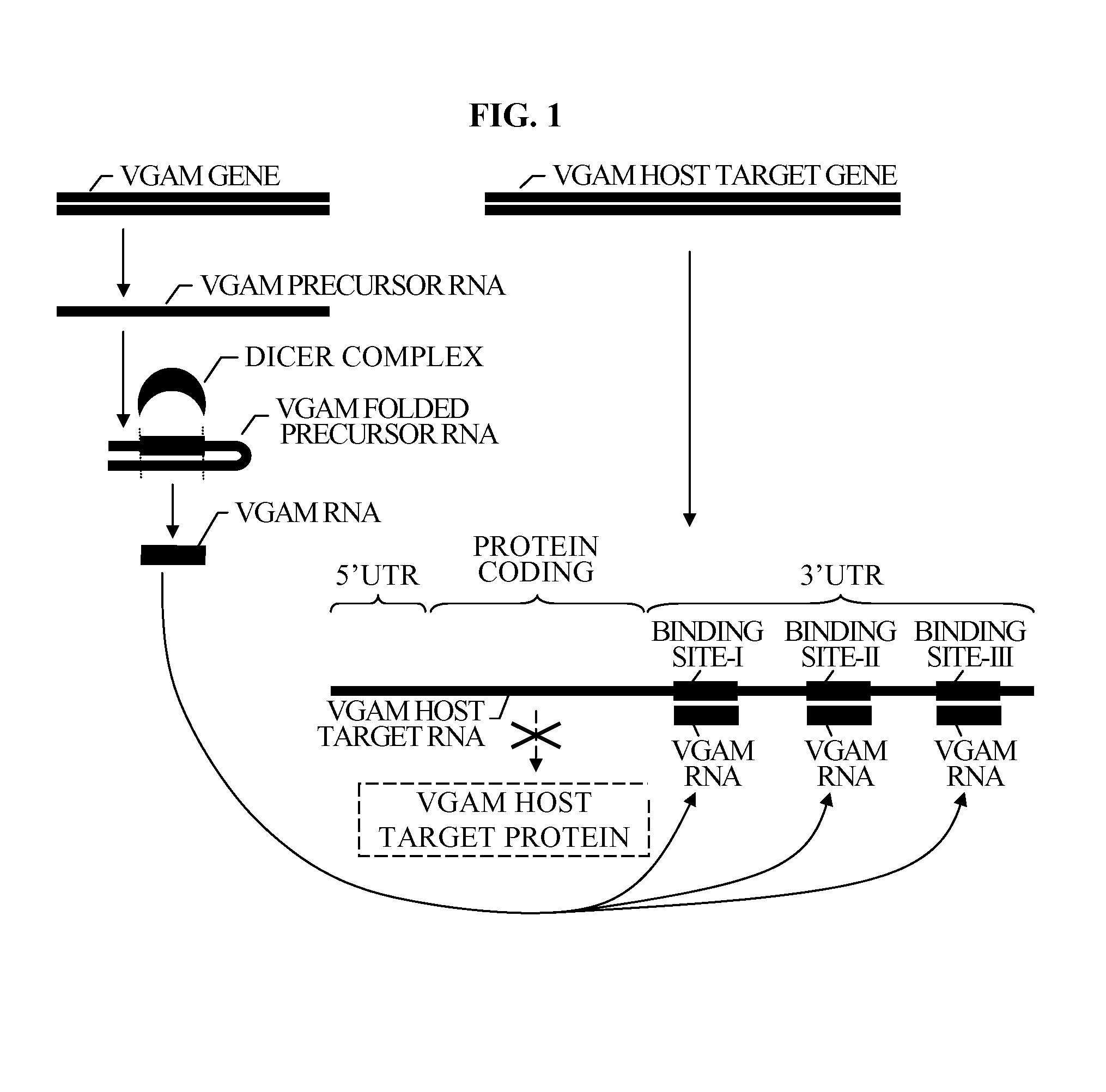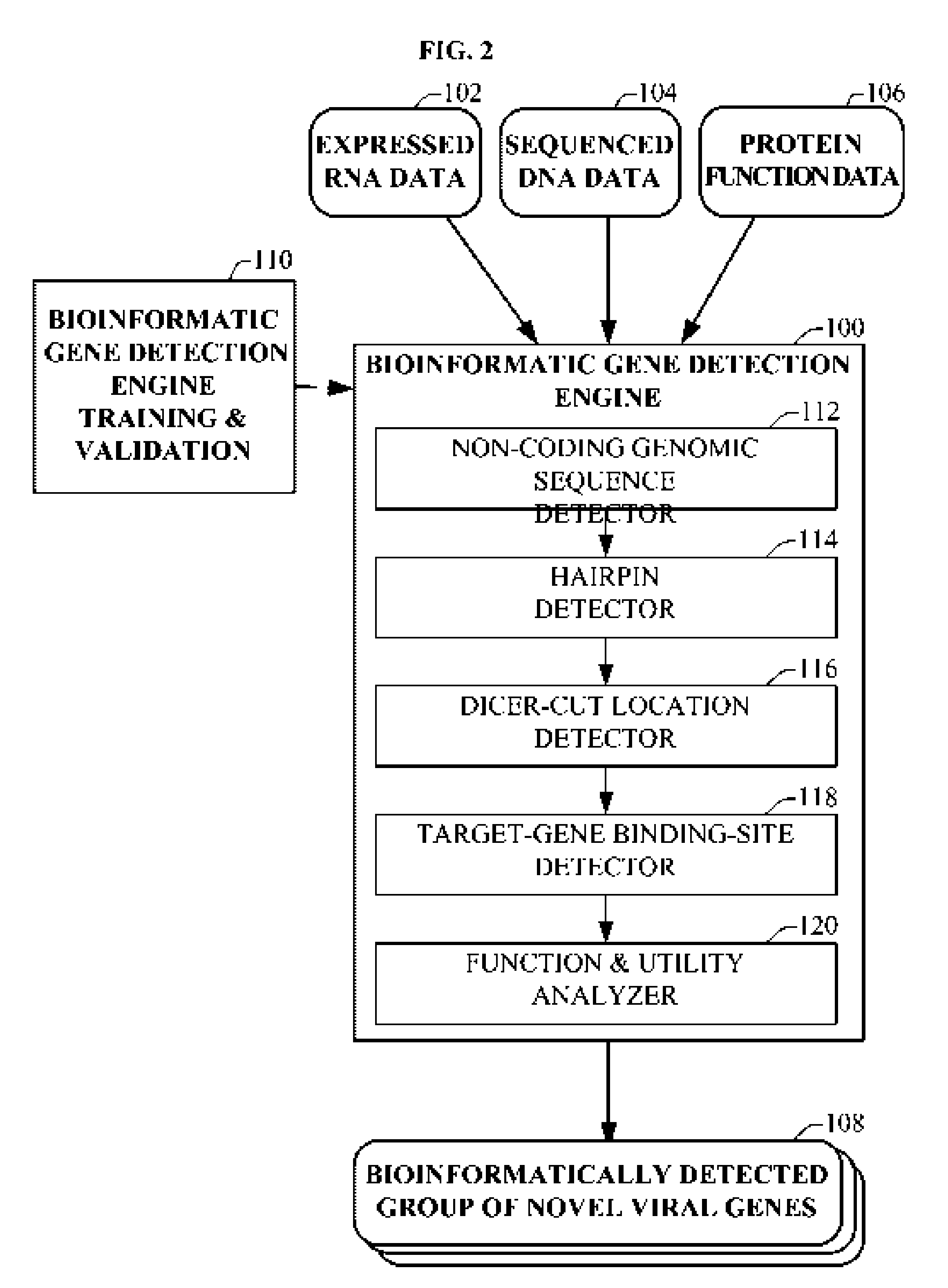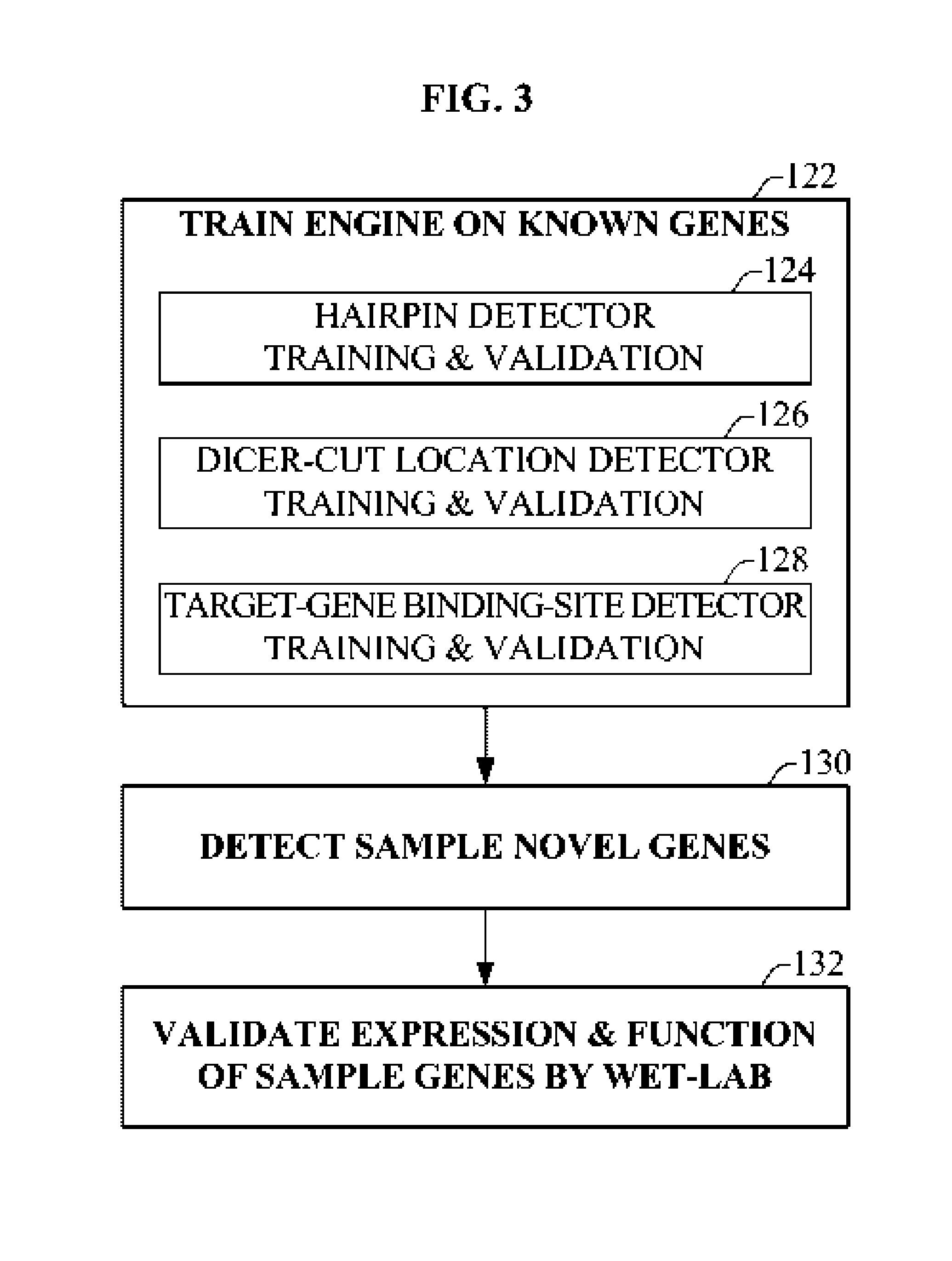Bioinformatically detectable human herpesvirus 5 regulatory gene
a technology of human herpesvirus and regulatory genes, applied in biochemistry, biochemical apparatus and processes, sugar derivatives, etc., can solve the problems of inability to detect, difficult to detect such genes, limited ability to detect novel rna genes, etc., to prevent and treat viral diseases
- Summary
- Abstract
- Description
- Claims
- Application Information
AI Technical Summary
Benefits of technology
Problems solved by technology
Method used
Image
Examples
Embodiment Construction
[0063]Reference is now made to FIG. 1 which is a simplified diagram illustrating a mode by which genes of a novel group of genes of the present invention, modulate expression of known host target.
[0064]The novel genes of the present invention are micro RNA (miRNA)-like, regulatory RNA genes, modulating expression of known host target. This mode of modulation is common to other known miRNA genes, as described hereinabove with reference to the background of the invention section.
[0065]VGAM GENE and TARGET GENE are two human genes contained in the DNA of the human genome.
[0066]VGAM GENE encodes a VGAM PRECURSOR RNA. However, similar to other miRNA genes, and unlike most ordinary genes, its RNA, VGAM PRECURSOR RNA, does not encode a protein.
[0067]VGAM PRECURSOR RNA folds onto itself, forming VGAM FOLDED PRECURSOR RNA. As FIG. 8 illustrates, VGAM FOLDED PRECURSOR RNA forms a “hairpin structure”, folding onto itself. As is well known in the art, this “hairpin structure”, is typical genes ...
PUM
| Property | Measurement | Unit |
|---|---|---|
| volume | aaaaa | aaaaa |
| volume | aaaaa | aaaaa |
| pH | aaaaa | aaaaa |
Abstract
Description
Claims
Application Information
 Login to View More
Login to View More - R&D
- Intellectual Property
- Life Sciences
- Materials
- Tech Scout
- Unparalleled Data Quality
- Higher Quality Content
- 60% Fewer Hallucinations
Browse by: Latest US Patents, China's latest patents, Technical Efficacy Thesaurus, Application Domain, Technology Topic, Popular Technical Reports.
© 2025 PatSnap. All rights reserved.Legal|Privacy policy|Modern Slavery Act Transparency Statement|Sitemap|About US| Contact US: help@patsnap.com



